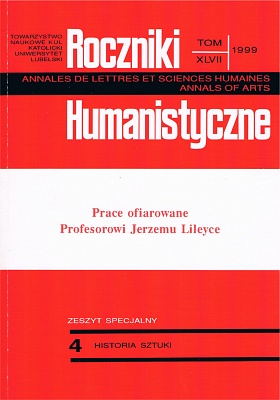Polska Diva w Wenecji. Plakaty weneckich festiwali sztuki kinematograficznej autorstwa Attilio Alfieriego
Abstrakt
The article focuses on several interesting poster projects undertaken by an Italian artist Attilio Alfieri (1904-1992). In the Polish written literature on the history of art and its connections with broadly understood cinematography no mention is given to this prolific Milan artist, who was particularly productive in the 30s and 40s of the XXth century. The first poster project shown during the I International Exhibition of Cinematographic Art in Venice in 1932 was the poster Lumiere, devoted to the inventors of the photo camera. Seven years later Alfieri prepared two projects for the seventh show of the Cinematographic Art held in Venice in 1939. The first was the poster titled La Divina presenting Greta Garbo, a Polish born actress and a silent film Diva, „looking” at the exhibition audiences half-mysteriously, half-hastily, as if in assertion of her enormous talent and beauty. As a companion to the Slavic actress Alfieri chose another cinema star, now of the southern temperament. In his composition called E. Duse (Ommagio alla 1 Diva italiana) the artist paid tribute to the brilliant Italian actress Eleonore Duse. Wearing a characteristic hat it was now Eleonore looking at her fans, raising her visage from the poster. The whole composition, set against a vibrant red background, accentuated what the artist had assumed as correct already in the very conception of the work, namely the idea of the cinema idol's „sainthood”. And if it is not a representation of a contemporary Madonna, then without doubt of a noble-born lady, full of sophistication and elegance. Besides the discussed compositions, the article highlights other works by Attilio Alfieri, such as the posters called Manifesto VII Esposizione Cinematografica Venezia, Moulin Rouge, or the post-war project from 1947 titled Manifesto VIII Esp. Inter. Cinematogtafica Venezia. All the compositions were created on the basis of the former projects, especially the huge industrial advertisements produced in the 30s. Alfieri's cinema posters constitute a further expansion of his expressive corpus. He was aware that in the era of the silent film an artist-designer faced a challenging task of „ehnancing” the sound and expression of the film stars that obviously cound not be heard from the screen via the cinema poster. Responding to the need Alfieri created multimedial works of art which functioned as a sort of automatic discourse between the artist himself and the language of photography. Photography, as the artist said, "being an automatic entity, can prompt other methods of work, and consequently make room for projects where there develops a dialogue between painting and a photographic representation, which in effect produces multimedial compositions.
Copyright (c) 1999 Roczniki Humanistyczne

Utwór dostępny jest na licencji Creative Commons Uznanie autorstwa – Użycie niekomercyjne – Bez utworów zależnych 4.0 Międzynarodowe.





